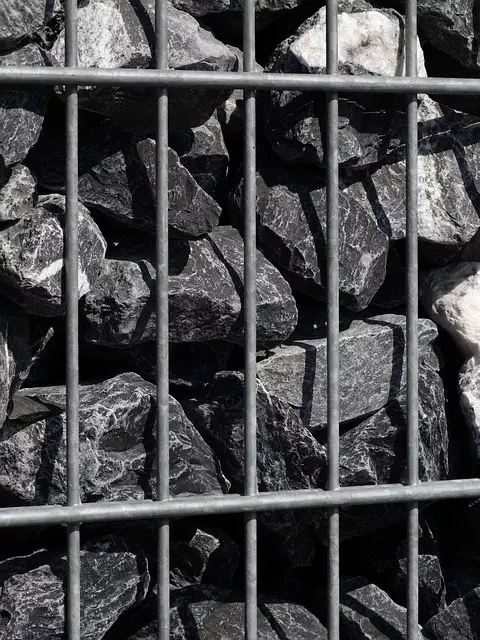Oak Harbor, Ohio, offers a unique blend of traditional and modern stone masonry techniques, enhancing property aesthetics while ensuring structural integrity. Natural stone's versatility complements various architectural styles, with methods like ashlar, random stonework, and dry stacking available. The choice between lime-based and cement-based mortars depends on project needs, with each offering distinct benefits: lime for historical flexibility and breathability, and cement for strength, durability, and water resistance. Dry-stacking (rustic) vs. wet-set (structured) techniques further differentiate projects, based on load-bearing requirements, aesthetics, and structural integrity.
In the realm of construction, stone masonry stands as a timeless art form in Oak Harbor, Ohio. This article explores the diverse challenges and advantages of embracing stone masonry techniques for your next project. From traditional lime-based mortar to modern cement options, we delve into the various types that define this craft. Understanding the benefits, such as durability and aesthetic customization, is crucial.
Additionally, we navigate common hurdles like weather, material logistics, and skill requirements, offering insights into successful stone masonry projects. Discover why choosing this construction method in Oak Harbor can revolutionize your space.
- Types of Stone Masonry Techniques in Oak Harbor, Ohio
- – 1.1 Traditional Lime-based Mortar vs. Modern Cement-based Mortar
- – 1.2 Full Stone (Dry-stack) vs. Mapped Masonry
Types of Stone Masonry Techniques in Oak Harbor, Ohio
In Oak Harbor, Ohio, stone masonry construction encompasses a diverse range of techniques that have been refined over centuries. Among the most common types practiced locally are ashlar masonry, where stones are cut and fitted with precision for a smooth finish, and random stonework, which relies on the natural textures and sizes of the stones for an rustic appeal. Another notable technique is dry stacking, utilizing gravity to hold stones in place without mortar, often seen in retaining walls and garden features.
The benefits of stone masonry are manifold for Oak Harbor residents. Not only do these techniques add aesthetic value to properties, but they also offer superior structural integrity due to the strong bonds formed between individual stones. Additionally, natural stone is highly durable, requiring minimal maintenance over time, making it a cost-effective choice for long-term investment in one’s home or business. Furthermore, the unique textures and colors of stone can complement various architectural styles, enhancing the overall curb appeal of any structure.
– 1.1 Traditional Lime-based Mortar vs. Modern Cement-based Mortar
In the realm of Stone masonry construction in Oak Harbor, Ohio, one fundamental distinction lies between traditional lime-based mortar and modern cement-based mortar. Each has its unique characteristics and offers specific benefits for different types of stone masonry projects. Traditional lime mortars, often preferred for historical or restoration work, possess excellent bonding properties with natural stones, ensuring a more flexible and breathable construction. This flexibility is crucial in mitigating the effects of thermal expansion and contraction, which can prevent cracks from forming over time.
On the other hand, modern cement-based mortars have gained popularity due to their strength, durability, and ease of use. These types of mortars set faster and provide a more consistent bond, making them ideal for contemporary construction projects. The benefits extend beyond structural integrity; cement-based mortars also offer better water resistance, which is essential in preventing moisture damage to the stonework—a significant consideration when enhancing the aesthetic appeal and longevity of any stone masonry structure.
– 1.2 Full Stone (Dry-stack) vs. Mapped Masonry
In Stone masonry construction in Oak Harbor, Ohio, two primary techniques stand out: full stone (dry-stack) and mapped masonry. Dry-stacking involves stacking stones without mortar, relying on their natural strength and friction to hold them together. This traditional method offers a rustic charm and is appreciated for its low maintenance requirements. It’s particularly suitable for walls that won’t bear much structural weight or where aesthetics take precedence.
On the other hand, mapped masonry, also known as wet-set, involves setting stones in a bed of mortar. This technique allows for more intricate designs, better stability, and the ability to create complex patterns and curves. The use of mortar enhances the overall strength and longevity of the stonework, making it ideal for structures that demand structural integrity, such as foundations or retaining walls. Choosing between these types depends on project needs, desired aesthetics, and structural considerations. Both methods have their benefits, contributing to the diverse landscape of Stone masonry construction in Oak Harbor, Ohio.


